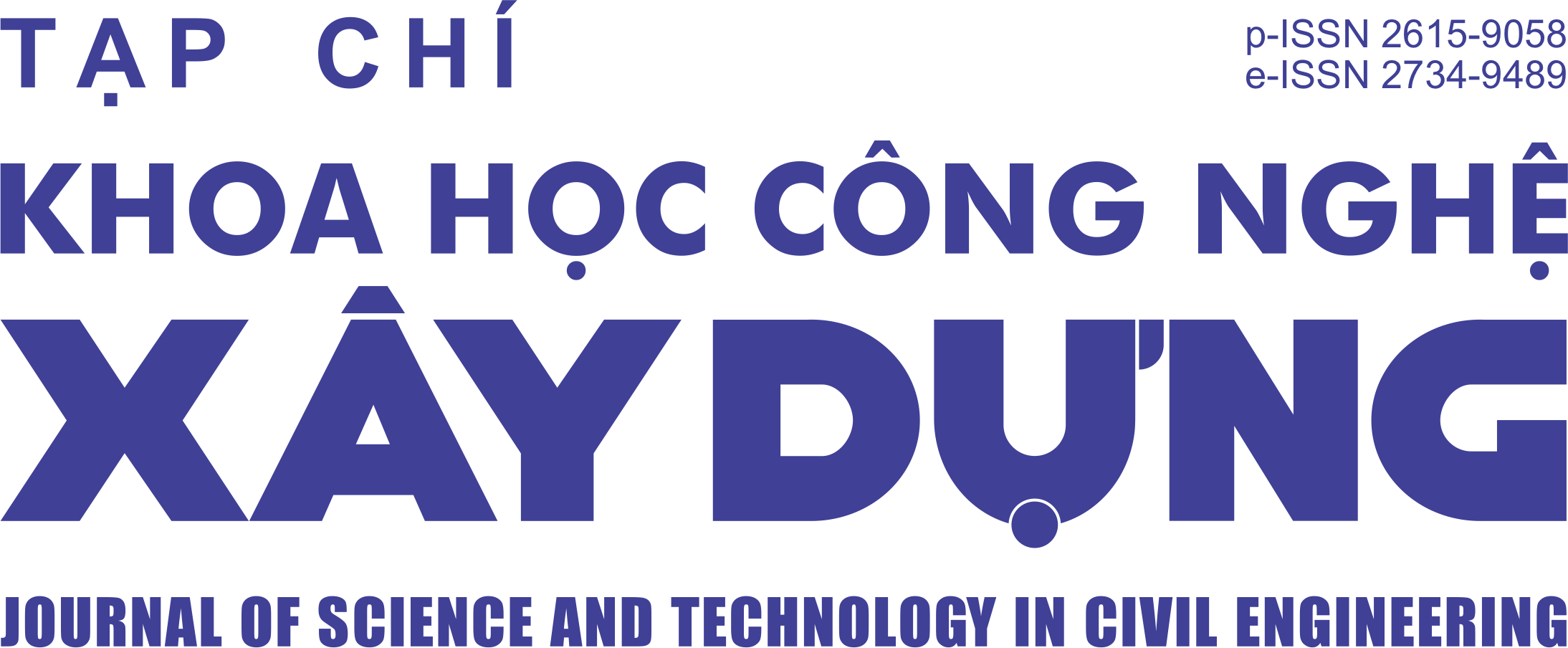Development of a cementless eco-binder as an alternative to traditional Portland cement in construction activities
Abstract
In this research, the performance of a cementless eco-binder, a mixture of waste materials including slag, circulating fluidized bed combustion ash (CFA), and rice husk ash (RHA) was investigated, in which CFA acted as an activator. One hundred and twenty paste samples were prepared by using the RHA/(slag + RHA) ratios of 0, 15, 30, 45% while keeping a constant ratio of CFA/(slag + RHA) at 25%. The setting period, compressive strength, the ultrasonic pulse velocity (UPV), and drying shrinkage of paste samples were determined at the samples’ age of up to 91 days. In addition, the microstructures of all paste samples were also characterized by scanning electron microscopy (SEM). It was found that the use of cementless eco-binder significantly increased the setting times, lower compressive strength, drying shrinkage, and UPV values compared to the control OPC sample. The maximum 91-day-old compressive strength gained by the binary binder of slag and CFA (R00C25) was 90% of that of the control specimen. Incorporation of RHA with higher replacement levels up to 45% resulted in a significant decrease in compressive strength up to 50%. Moreover, the SEM analysis revealed that there was a large difference in the microstructures of the control and the cementless eco-binder samples, in which the main hydration products were C-S-H/C-A-S-H gels and ettringite (AFt) due to relatively high amount of SO3 and SiO2 in the CFA and RHA, respectively. Thus, it can be realized that the potential for the use of slag, CFA, and RHA as a sustainable cement-free binder is promising in the construction industry, especially for lower strength or no required early high strength structures.
Keywords:
cementless eco-binder; circulating fluidized bed combustion; rice husk ash; slag; microstructure; compressive strength; drying shrinkage; setting time; ultrasonic pulse velocity.
Downloads
Copyright (c) 2020 National University of Civil Engineering

This work is licensed under a Creative Commons Attribution-NonCommercial-NoDerivatives 4.0 International License.
1. The Author assigns all copyright in and to the article (the Work) to the Journal of Science and Technology in Civil Engineering (JSTCE) – Hanoi University of Civil Engineering (HUCE), including the right to publish, republish, transmit, sell and distribute the Work in whole or in part in electronic and print editions of the Journal, in all media of expression now known or later developed.
2. By this assignment of copyright to the JSTCE, reproduction, posting, transmission, distribution or other use of the Work in whole or in part in any medium by the Author requires a full citation to the Journal, suitable in form and content as follows: title of article, authors’ names, journal title, volume, issue, year, copyright owner as specified in the Journal, DOI number. Links to the final article published on the website of the Journal are encouraged.
3. The Author and the company/employer agree that any and all copies of the final published version of the Work or any part thereof distributed or posted by them in print or electronic format as permitted herein will include the notice of copyright as stipulated in the Journal and a full citation to the Journal as published on the website.







